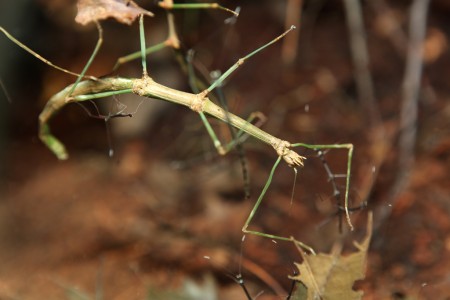Author: Milan
In the spring of 2005, I graduated from the University of British Columbia with a degree in International Relations and a general focus in the area of environmental politics. In the fall of 2005, I began reading for an M.Phil in IR at Wadham College, Oxford. Outside school, I am very interested in photography, writing, and the outdoors. I am writing this blog to keep in touch with friends and family around the world, provide a more personal view of graduate student life in Oxford, and pass on some lessons I've learned here. View all posts by Milan


Is this really something that you saw today?
The picture is amazing and produces a strange visceral reaction in me.
I really like insects, ps.
Thanks for commenting.
I took the stick bug photo on April 14th of this year. While it would be nice to be able to see and photograph something interesting every day, in actuality I need to build up little collections and then release images from them one at a time.
Some previous insect photos:
Goliath beetle
Wasp on a purple spherical flower, Vermont
Bumblebee on a sunflower
Insect on pink flower
Butterflies and moths
Spider on concrete wall
Spider web
Spider on wood
There are also some pieces of art shaped like insects:
Giant praying mantis, Montreal
Giant spider, Ottawa
My favourites are the Goliath beetle and the first two spider pictures. I have a t-shirt of the giant Maman spider, and I wrote about it as part of my fine arts portfolio when I was trying to get into university. Spiders are the best.
They are hard animals to feel kinship with. Mammals are so similar to us and comprehensible, by comparison. Spiders are alien – patient, solitary, and predatory. I can’t really understand how Louise Bourgeois finds them comforting.
My favourite was the bumblebee on the sunflower.
I also think spiders are so cool (and misunderstood) , the webs they weave.
“With such vile characteristics, why did Bourgeois choose the spider as a symbol of the mother’ Her answer is in an ode to her mother, in which she wrote, ‘my best friend was my mother and she was deliberate, clever, patient, soothing, reasonable, dainty, subtle, indispensable, neat, and as useful as a spider’ (Bernadac & Obrist 1998 p.321). As early as 1948 in a series of prints Arraignee (Spider) (Fig. 3) she talks favourably about the ‘crafty spider’, who is her ‘friend’ (Wye, Smith 1994 p. l64). This theme is taken up and greatly explored between 1986 and 2000 when she drew, wrote and created thirty large installation pieces of spiders (Fig. 4). Most are between one metre and two metres tall, but Maman is the largest, measuring ten metres tall. Bourgeois’s transformation of her mother into a spider is reminiscent of Arachne’s metamorphosis (Fig. 5). Arachne, a young woman from Lydia, famed for her skill of weaving, rashly challenged Minerva, the goddess of
wisdom, to a contest. Arachne wove a cloth depicting the loves of the gods of Olympus, which enraged Minerva, so much so that she tore it to pieces. Arachne overcome by Minerva’s wrath hanged herself, but was spared from death by the goddess, who changed her into a spider to forever toil and weave (Hall 1974 p. 30).
The spider metonymically calls on the richly layered theme of weaving, a subject which leads back to Bourgeois’s childhood where, aged 11, she helped her parents restore tapestries in a workshop in Choisy-le-Roi, near Paris. Such are the memories of this time that the subjects of weaving, spinning, and movement continually articulate Bourgeois’s work. For example, she says her drawings are ‘a secretion like a thread in a spider’s web’ (Morris et al 2000 p.17) and her many spiral forms are a ‘study of the self’ (Morris et al 2000 p.17). There is a strong sense in Bourgeois’s work that weaving is linked to creation itself, as in the three Fates of Greek cosmology who wind, spin and cut the thread of life. In Homer’s Iliad, Helen too, weaves her own destiny into her web in the corner of her room and in the Odyssey, Penelope weaves the cloth by day and un-picks the cloth by night (Morris et al 2000 p.17). The philosopher Adriana Cavarero made an interesting observation
about Penelope’s act of weaving. The myth sees Penelope as famous for her un-weaving, however, Cavarero sees it differently, she sees Penelope as a weaver of body and soul, one who inter-weaves the act of thinking with bodilyness, and one who connects the intellectual plane with the sensory plane (Morris et al 2000 p.30). I too suggest Bourgeois is like Penelope and throughout the installation space she weaves together the viewer’s intellectual thoughts with their bodily feelings.”
McCrae, Trisha. “Louise Bourgeois. Maman: From the Outside In”.
http://www.artandeducation.net/paper/louise-bourgeois-maman-from-the-outside-in/